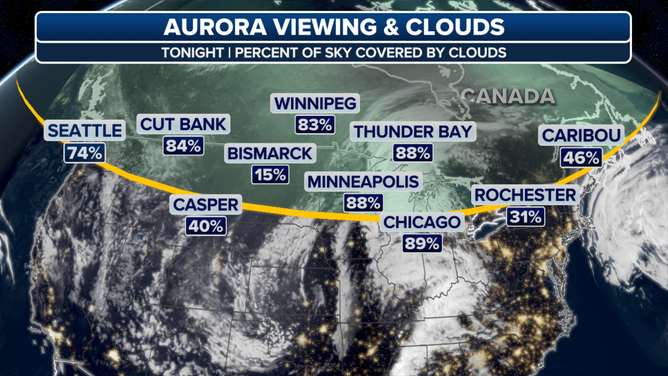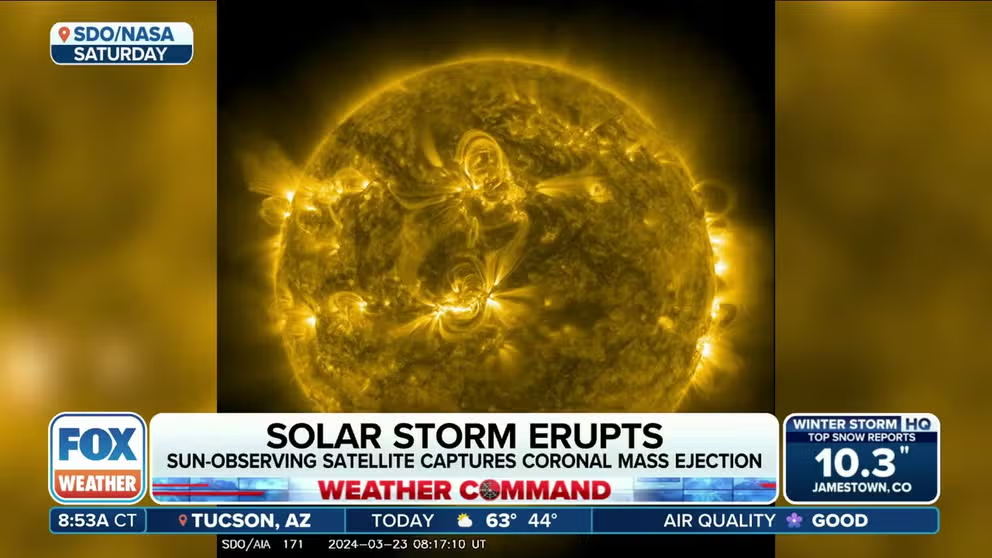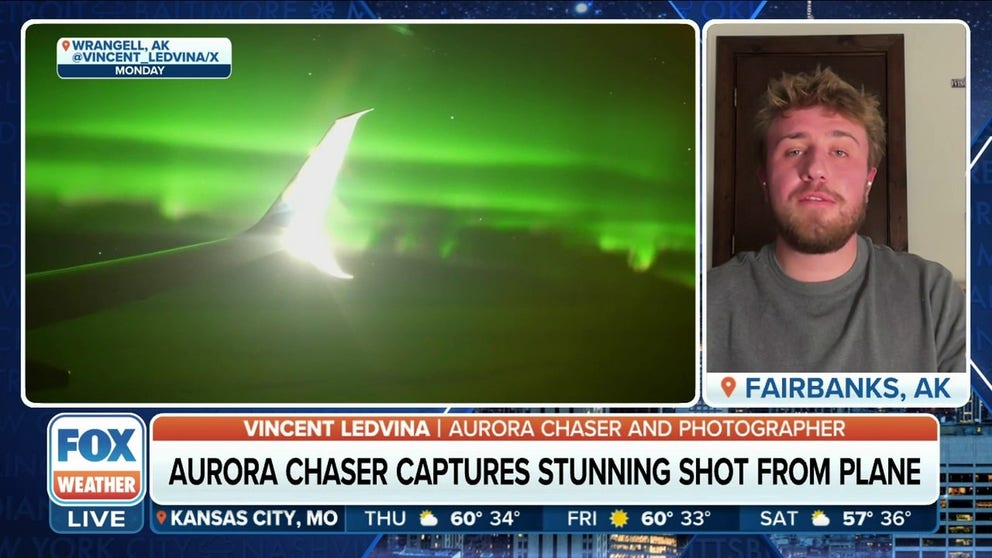Geomagnetic storm could create Northern Lights displays in southern US on Monday night
A geomagnetic storm is underway, which could create auroras as far south as Alabama and Northern California through Monday night. G4 (severe) conditions have been observed after a coronal mass ejection was seen leaving the Sun.
Geomagnetic storm underway with possible aurora lights in Northern US on Monday
A geomagnetic storm was underway this weekend with powerful solar winds producing G4 (severe) levels creating possible communication issues and potentially causing Northern lights at lower latitudes.
A severe geomagnetic storm is underway after eruptions from the Sun sent plasma blasting toward Earth, with the potential to produce Northern Lights in New York and Idaho on Monday night.
NOAA’s Space Weather Prediction Center (SWPC) issued a Geomagnetic Storm Warning on Sunday after Sun-observing satellites recorded a coronal mass ejection (CME) departing on Friday. The CME reached Earth on Sunday morning and continued to produce strong geomagnetic storm levels throughout the day.
Auroras occur when charged particles from the Sun interact with the Earth’s atmosphere, creating what are known as the Northern and Southern Lights.
On its five-point scale of geomagnetic storms, space experts believed the first wave of energy could rank as either a G1 or G2. However, within the past 24 hours, severe G4 space weather conditions were observed and continued into Monday morning, according to the SWPC dashboard.
A geomagnetic storm of a G1 rating is the weakest and commonly leads to displays of Northern Lights over Alaska and Canada. A G3 rating could allow an aurora to be seen as far south as Washington, Wisconsin and New York if skies are clear. With G4 (level 4 out of 5) conditions observed and predicted on Sunday, displays of Northern Lights could have been visible as far south as Alabama and Northern California, but cloud cover likely obscured the view for many.
On Monday, NOAA space weather forecasters said the coronal mass ejection was weakening. A Geomagnetic Storm Watch continues through Monday with G3 (strong) conditions possible, according to the SWPC.
"However, solar wind speed is still elevated and could result in further geomagnetic storm conditions," the SWPC said.
THINGS TO KNOW ABOUT THE NORTHERN LIGHTS
There is another chance for Northern Lights in the northern U.S. on Monday night.
The amount of geomagnetic activity is also monitored by ground-based magnetometers, and the event is measured on the Kp index scale, which ranges from 0 to 9.

Cloud cover forecast across the U.S. for Monday night.
(FOX Weather)
A G3 event with a high Kp-index value caused the Northern Lights to be spotted as far south as Las Vegas in December. Space experts believe the upcoming event could reach a Kp-index value of at least 6, which would put cities such as Seattle, Minneapolis, Green Bay and Syracuse, New York, in the visibility zone.
The University of Alaska Fairbanks Geophysical Institute is forecasting high aurora activity with Kp-6 levels through Monday night.
"The public should not anticipate adverse impacts, and no action is necessary, but they should stay properly informed of storm progression by visiting our webpage," the SWPC said on Sunday.
The FOX Forecast Center expects there to be plenty of hindrances in the sky on Monday that could complicate viewing.
A large storm system will be moving through the country’s heartland, producing plenty of snow in the northern U.S. and severe thunderstorms in the southern U.S.
NOAA PREDICTS STRONGER PEAK OF SOLAR ACTIVITY IN 2024 THAN ORIGINALLY ANTICIPATED
Space experts admit determining the exact strength of geomagnetic activity is challenging, even with more frequent occurrences.
Geomagnetic storms have become more numerous over the last year as the Sun begins to reach the maximum phase of its solar cycle.
A solar cycle is a sequence the Sun’s magnetic field goes through every 11 years, where the field flips. Solar Cycle 25 began in 2019 and could last until 2030.
Aurora chaser captures stunning photo of Northern Lights from a plane
The vast wilderness of Alaska helped to create great viewing of the Northern Lights.

